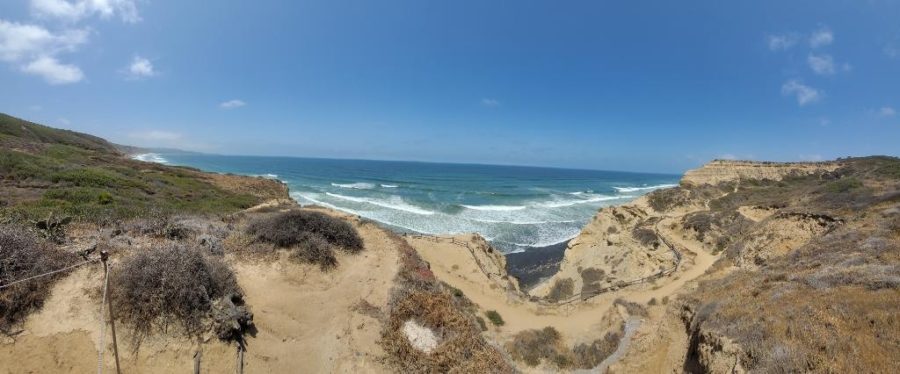APES Students Hike to Torrey Pines Nature Reserve
June 7, 2022
The AP Environmental Science students traveled to the Torrey Pines Nature reserve on May 18th, 2022. The cliffs were very high and overlooked the beach and the pacific ocean. There were many wildlife present on the hike. The Purpose of this field trip was to get students in touch with nature and learn about the reserve. Students traveled via bus and hiked around to scenic spots, sat down and painted, and learned about the history of the nature reserve. The Reserve was established in 1899, in an effort to preserve the beauty of the site. Students also learned about the sad and steady decline of the Torrey Pine population.
“It’s really sad that the Torrey Pine population is going down.” Abdel Abdalla (‘22) states. “It’s such a beautiful tree with a lot of history behind it, and it’s really rare too.
Students hiked around enjoying the scenic views on cliffs, the strong tides of the ocean along the beach, and even the taxidermied animals inside the Nature Reserves rest area. There were many different types of mountain lions, birds, and wolves.
The Torrey pine is the United States’ rarest native pine and potentially the world’s rarest pine. There are just two areas where it grows naturally. They are located in San Diego, and also in Santa Rosa Island. Scientists believe it was never a widespread pine, preferring to stay along the ocean, but that it did occur in more locations along the coast in the past. Due to a scarcity of fossil records, it is impossible to pinpoint precise locations. Furthermore, which Torrey pine forest is still unknown. There were as many as nine thousand trees in existence in the 1970’s, but now it is a third of that.
“I just want to know what we can do to save these unique trees.” Ridwan Farah (‘22) states. “The way their needles capture moisture, and create a little fog under the trees is very interesting.”
The decline of the Torrey pine is attributed to air pollution, fire, drought, and several bark beetle infestations. Most scientists can agree that the climate change to an even hotter and drier environment was a huge part of the decline as well. The reserve is already combating the dangerous bark beetles, while it is up to regular people to decrease the amount of air pollution they emit, and reverse climate change so their would be less fires and droughts.
“This should be a wake up call for all people, especially in Southern California.” Ms. Petraglia, the AP Environmental Science teacher, states.










